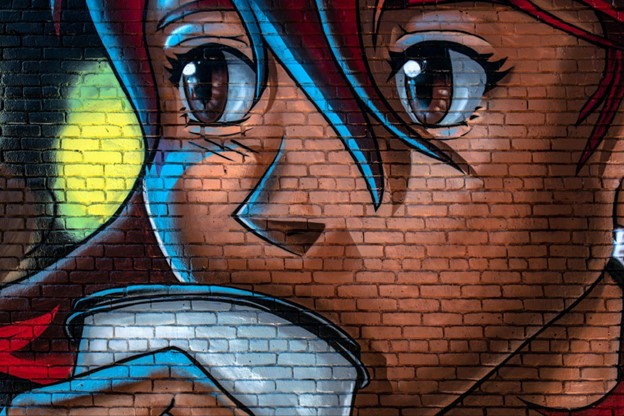The world of videogames inhabit another level of creative expression; a videogame might be playful and whimsical, but it could also become a virtual space in which various art forms and cultural influences meet.

Over the years, one notable influence has been the captivating world of anime. Anime is a unique form of animation originating from Japan; an art form that succeeded in finding its way into the heart of popular culture. Amine has inspired famous artists, innovators and trendsetters; it has this progressive, exciting element to it, and teems with innovation and creativity. Today, it is one of the leading inspirations among creators and influencers.
Anyway, what is anime? What words best define this genre of art?
Anime is short for animation, and represents an increasingly well-known, beloved form of animation; anime employs colorful graphics, relatable characters and fantastical themes. It tends to approach worldviews from abstract and unconventional perspectives; at the same time, it does well to embody elements from genres like sci-fi and romance.
Anime began with brief productions for commercials, and early clips were crude and difficult to process. The 1960s saw the broadcast of the first televised anime series; since then, it has remained a popular, original medium of art, although it was until the 1980s that the release of anime became popular for home distribution.
One realm of popular culture that has felt the impact of anime is the world of videogames. Anime and gaming result in a captivating blend of art; a blend that is distinctive in style and compelling in storyline, and dynamic in gameplay mechanics. This article will explore the impact of anime culture on video games, delving into its transformative effects on visuals, narratives and fan engagement.
Visual Marvel
Anime features sharp, vibrant graphics that makes it perfect for video gaming. What arguably makes it stand out most is its drawing style; some characters have outlandish costumes, spiky hairdos, and unrealistically large eyes.
This distinct style has had a significant impact on slot games, which are no longer one dimensional color schemes. Now, there is a more delicate approach to the animation; they are immersive and intriguing, captivating the atmosphere through graphics and imagery. Some slot games are martial art themed, with ninjas and samurai as main characters, but regardless, the impact anime has had on their design is clear to see.
Narrative Depth
One of anime’s most celebrated attributes is its intricate storytelling, with the genre influencing game creators to present complex narratives that captivate players; narratives imbibed with emotional depth and thought-provoking themes; narratives blurred with the boundaries of reality and fantasy. With anime in the picture, videogames are no longer mere entertainment; they are now a medium for profound self-reflection and emotional exploration.
Cultural Diversity and Global Appeal

With anime’s rise to prominence, there is now a cultural shift in the realm of video games. The Japanese culture displayed in anime-inspired games ushers diverse experiences to global audiences; players of anime-based games tend to gain insights into Japanese society and rich history, fostering cross-cultural understanding and appreciation. Anime-inspired video games have become a catalyst for collaboration between international game developers, too. This gives rise to unique gameplay mechanics, narrative approaches, and art styles.
Anime games are by-products of this effect, and a fascinating niche in video gaming. Anime games pop with vibrant color schemes, unique character designs and fluid animation; they push the boundaries of artistic expression in the art of gaming – a fusion that adds a whole new layer of visual sophistication.
Fan Engagement and Empowerment
Anime culture has enticed a fervent fan base known for its passion and devotion. In 1985, North America saw the introduction of the Nintendo Entertainment System, enthralling a generation of young Americans raised on diet coke and cartoons.
Companies increasingly employed figures from the anime industry to give their product more edge, while developers embraced fan feedback, rolling out newer games to incorporate these suggestions. All this led to the development of considerably more immersive and engaging experiences; anime-inspired games even give rise to huge fan events that celebrate the unique blend of anime and gaming cultures. These events empower fans to express creativity, connect with individuals, and build friendships.
Possible Future
The anime culture has indeed revolutionized the way people perceive and experience games. When a gamer picks up a console, they play what the Japanese invention somehow inspires. The fates of anime and videogames now intertwine, with little wonder as to why many creators adapt countless anime into such format. The influence of anime is evident in all continents, despite the fact that western games dominated the industry as recently as the last decade.
Game players are no longer interested in the simple optics of video gaming – they want to see action-packed storylines and exciting themes that will add an extra layer of adventure to the game.
As the impact of anime culture continues to grow, we can expect further innovations. We can collaborate and share experiences; experiences that will continue to captivate audiences and shape the future of video games.
I'm a published author and proud US Army veteran who happens to be a gamer, so I decided to combine the two and love every minute of it! Feel free to contact me with any questions or comments and I'll be sure to get back to you.





More Stories
Highly Anticipated Post-Apocalyptic MMO FPS, PIONER, Launches on Steam Early Access
DAIMON BLADES Preview for Steam Early Access
ReStory Preview for Steam